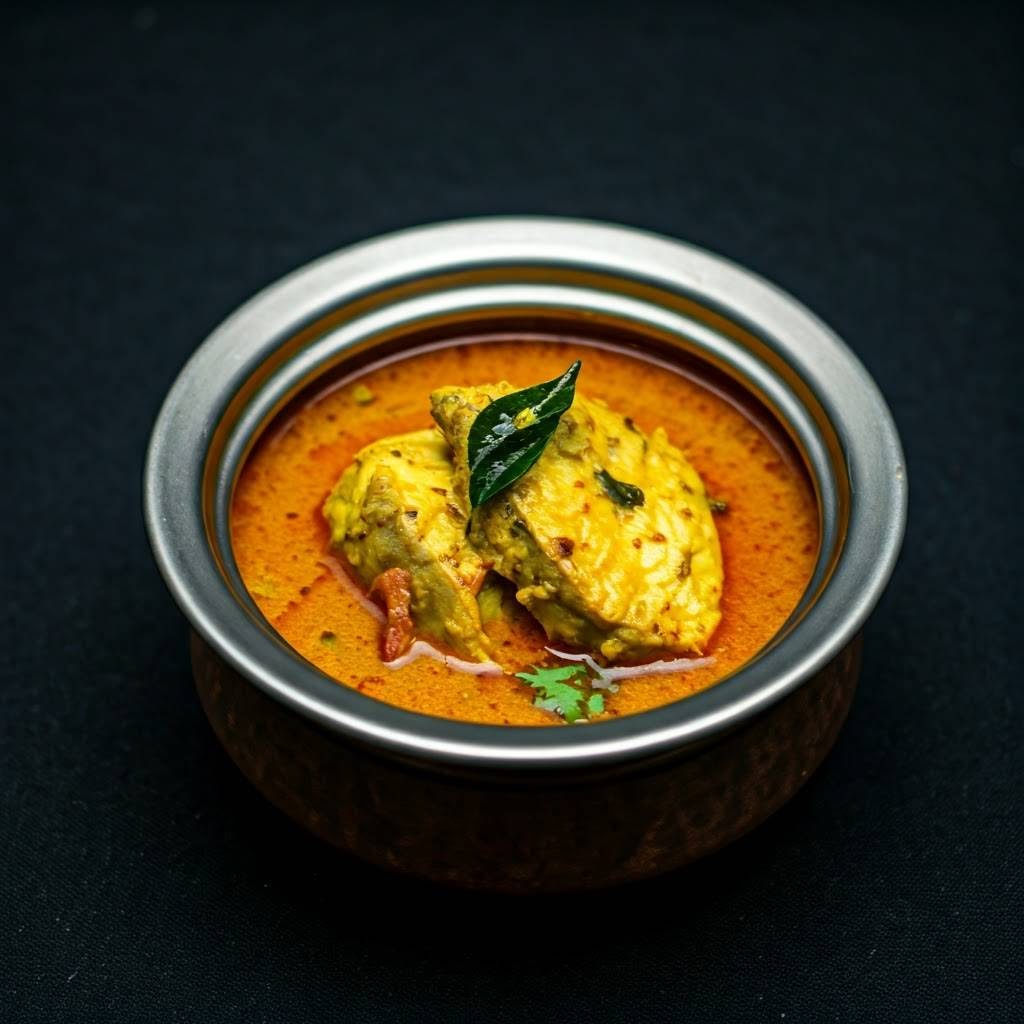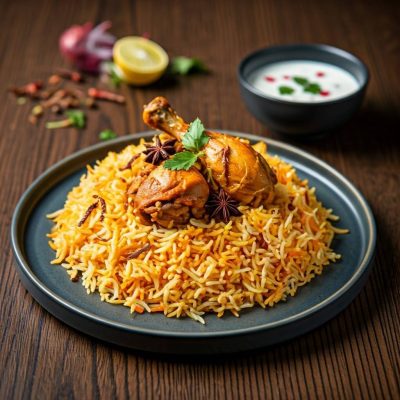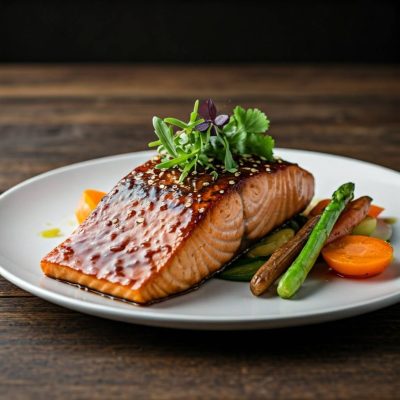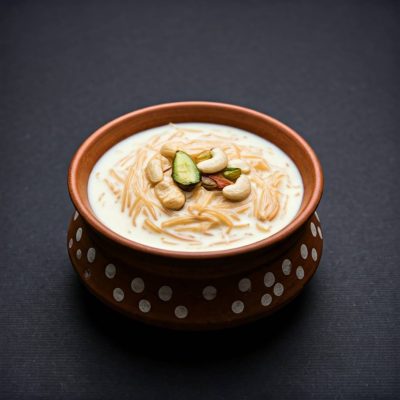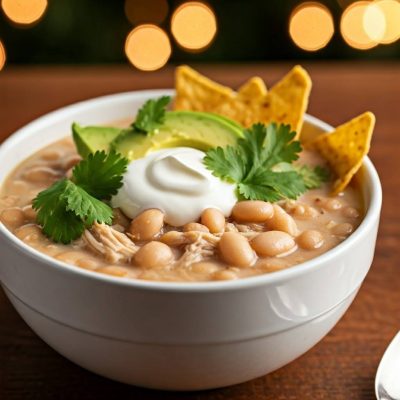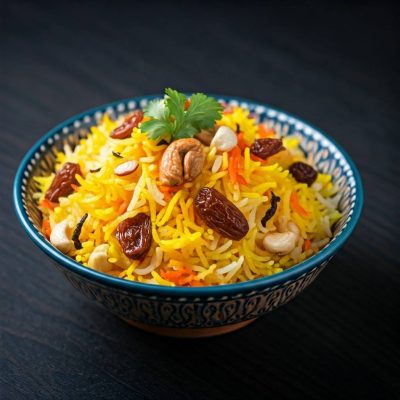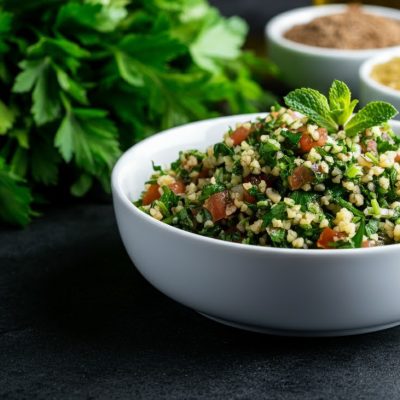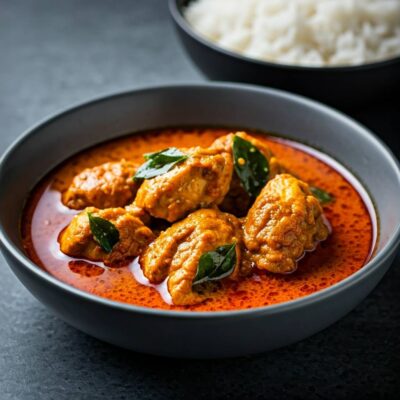Ingredients
- ½ kg of firm white fish (e.g., seer fish, kingfish, or sardines)
- 1 tablespoon red chili powder
- A pinch of turmeric powder
- 1 lemon-sized piece of tamarind (valan puli)
- 1-inch piece of fresh ginger, finely sliced
- 3 shallots
- 1 medium tomato, chopped (optional)
- 1 sprig curry leaves
- 1½ cups freshly grated coconut
- 3½ cups water
- 1 tablespoon coconut oil
- Salt to taste
Directions
Thenga Aracha Meen Curry, or Kerala-style fish curry with ground coconut, is a cherished dish in traditional Malayali cuisine. This recipe is a beautiful blend of fresh fish, creamy coconut, tangy tamarind, and a touch of spice—bringing together the quintessential flavors of coastal Kerala.
What makes this curry unique is the use of freshly ground coconut, which gives it a rich, velvety texture and subtle sweetness that perfectly balances the heat from red chili powder and the sourness of tamarind. Unlike other fish curries that rely heavily on store-bought spice blends or overpowering flavors, this dish uses minimal ingredients and lets the natural taste of the fish shine.
The curry is gently simmered to keep the fish tender and is finished with a generous drizzle of coconut oil and fresh curry leaves for an aromatic touch. Traditionally cooked in a clay pot for added flavor, this dish is best enjoyed after resting for an hour, allowing all the spices to soak in beautifully.
Serve this comforting fish curry with steamed white rice or Kerala red matta rice for a wholesome, satisfying meal. Whether you’re new to South Indian cuisine or a seasoned cook, this recipe brings the soul of Kerala right into your kitchen.
🔥 Cooking Temperature Guidelines
Simmering the Fish in Tamarind Gravy:
Heat Level: Medium heat until it starts to boil, then reduce to low heat.
Internal Goal: Cook fish gently without breaking it. The curry should not vigorously boil once the fish is added.
Time: Simmer gently for 10–15 minutes or until the fish is fully cooked and tender.
After Adding Coconut Paste:
Heat Level: Low heat only.
Important: Do not boil after adding the coconut paste. Coconut can split or curdle if overheated.
Time: Heat for 3–5 minutes just until warmed through.
✅ Tip
Using a clay pot or thick-bottomed pan helps maintain gentle, even heat and enhances flavor.
Here’s an estimated nutrition overview per serving (based on 4 servings) for Thenga Aracha Meen Curry:
| Calories | 250–300 kcal |
| Protein | 25–30 g |
| Fat | 15–18 g |
| Carbohydrates | 8–10 g |
| Fiber | 2–3 g |
| Sodium | Varies |
| Cholesterol | Moderate |
Disclaimer: This recipe and nutritional information are provided for general informational purposes only. Individual results may vary based on ingredient brands, portion sizes, and preparation methods. Please consult a healthcare professional for personalized dietary advice.
Steps
1 Done | Prepare the Tamarind ExtractSoak the tamarind in 3 cups of warm water for about 10 minutes. Squeeze and strain to extract the juice. |
2 Done | Grind the Coconut PasteIn a blender, combine the grated coconut and shallots with ½ cup of water. Grind into a smooth paste and set aside. |
3 Done | Cook the FishIn a clay pot or heavy-bottomed pan, add the fish pieces, tamarind extract, red chili powder, turmeric powder, chopped tomato (if using), sliced ginger, curry leaves, and salt. Bring to a gentle boil over medium heat, then reduce the heat and simmer for 10–15 minutes until the fish is cooked through. |
4 Done | Add the Coconut PasteGently stir in the ground coconut paste. Adjust salt if necessary. Heat the curry over low heat for a few minutes, ensuring it doesn't come to a boil, to prevent curdling. |
5 Done | Finish with Coconut OilTurn off the heat and drizzle the coconut oil over the curry. Cover and let it rest for at least an hour to allow the flavors to meld. |
6 Done | 💡 TipsFor an authentic taste, use valan puli (regular tamarind). However, kudampuli (Malabar tamarind) can be used as an alternative. Allowing the curry to rest enhances its flavor, making it even more delicious when served later. Serve this flavorful fish curry with steamed rice or Kerala-style red rice for a traditional meal. |

